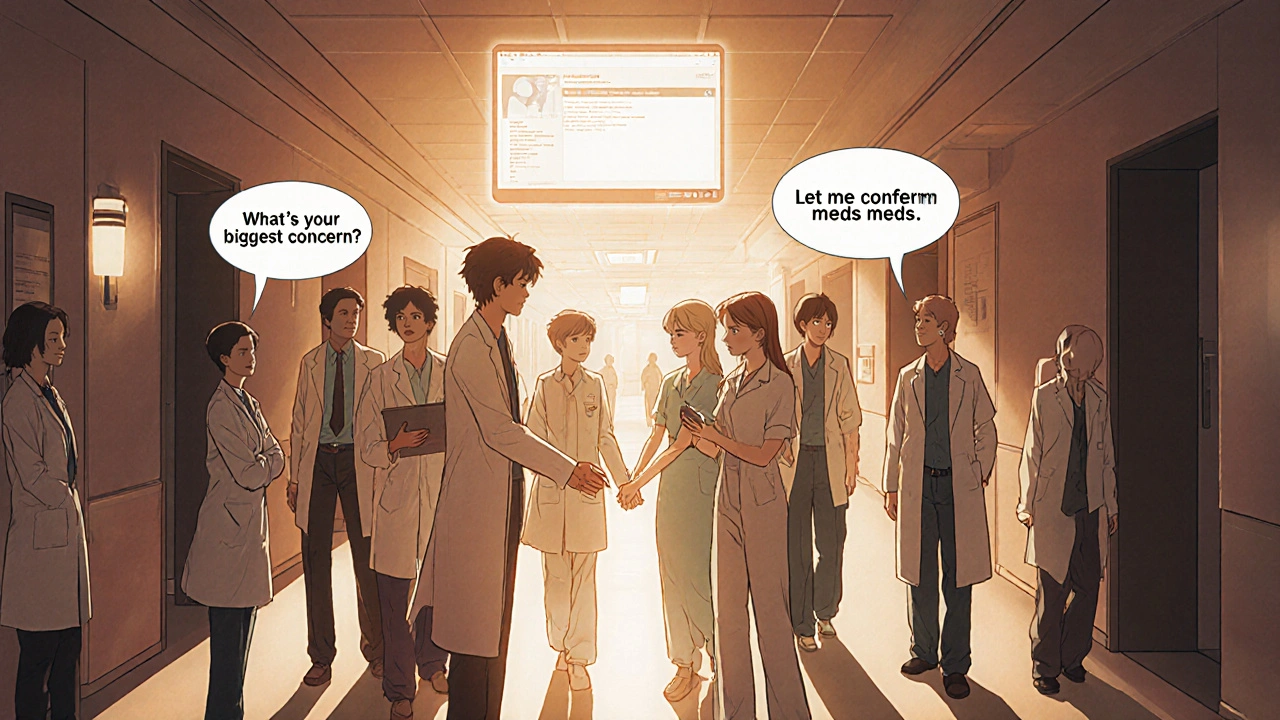
Why healthcare communication training isn’t just another box to check
Most people think good communication in healthcare means being polite, smiling more, or using simpler words. But when a patient leaves the office confused about their meds, or a nurse misses a critical warning because the doctor didn’t say it clearly, that’s not a personality issue-it’s a system failure. Institutional generic education programs in healthcare communication were created to fix exactly that.
These aren’t fluffy workshops. They’re structured, evidence-backed training programs designed to reduce errors, improve outcomes, and save lives. According to the Agency for Healthcare Research and Quality, poor communication contributes to 15-20% of adverse patient events. That’s not a small number. It’s one in five preventable harms.
What these programs actually teach-beyond "be nice"
Generic doesn’t mean basic. These programs drill into specific, measurable communication behaviors that matter. For example, the Program for Excellence in Patient-Centered Communication (PEP) at the University of Maryland teaches clinicians to do two things: elicit the patient’s full story and respond with empathy. Not just listen. Not just nod. Actually hear what’s unsaid.
At Mayo Clinic, nurses and doctors learn boundary setting-how to say no to unreasonable demands without damaging trust. They use real video examples of patients pushing back on treatment plans, and trainees practice responses until they get it right. One nurse practitioner reported a 40% drop in burnout after just three months of this training.
Meanwhile, Northwestern University uses mastery learning: students must hit an 85% proficiency score on simulated patient interactions before moving forward. They don’t just watch videos-they role-play until they can handle a hostile family member, a non-compliant diabetic, or a terrified cancer patient without breaking stride. Their 2022 study showed 37% better skill retention after six months compared to traditional lectures.
Who gets trained-and why it matters
These programs aren’t just for doctors. Infection preventionists at SHEA learn how to communicate with the media during outbreaks. They’re trained to correct vaccine misinformation on social media, a skill that helped one clinician reach 50,000 people monthly with accurate data.
Public health workers in Texas take free courses from UT Austin’s Health Communication Training Series. One module, launched in 2022, teaches how to plan communication during a pandemic. That’s not theory-it’s survival. CDC after-action reports found 40% of early pandemic delays were due to poor internal and public messaging.
Even hospital administrators are being trained. Why? Because communication failures aren’t just clinical-they’re operational. When lab techs, pharmacists, and nurses don’t speak the same language, delays happen. Medications get mixed up. Discharge instructions get lost. That’s why 65% of communication failures occur between teams, not between doctors and patients, according to AHRQ.

The real-world impact: numbers that can’t be ignored
The data speaks louder than any slogan. Physicians who complete communication training see a 30% drop in malpractice claims, per Johns Hopkins Medicine. Patients report higher satisfaction scores-up to 78% correlation with communication quality, according to Press Ganey’s 2022 data.
At Northwestern, residency programs using mastery learning saw 28% fewer patient complaints. At Mayo Clinic, 92% of learners said they’d recommend the course. In one Texas hospital, nurses trained in empathy techniques reduced readmission rates by 18% within a year.
And it’s not just anecdotal. CMS now ties 30% of hospital reimbursement to HCAHPS scores-patient surveys that heavily weight communication. Hospitals that ignore this training are losing money. And more importantly, they’re putting patients at risk.
Why most programs fail-and how the best ones succeed
Training alone doesn’t work. You can teach someone how to listen, but if they’re running five appointments behind and the EHR system forces them to click through 12 screens just to order a test, they won’t use it.
The best programs follow a four-step model: First, they identify gaps through patient surveys. Second, they pick three to five high-impact skills to focus on. Third, they train using real clinical scenarios-not hypotheticals. Fourth, they embed prompts into the electronic health record. For example, an EHR might pop up: "Did you ask the patient what their biggest concern is today?"
Northwestern’s program takes six to eight weeks to train faculty before rolling it out. They assign communication champions in each unit. These are respected clinicians who model the behavior. That’s key. When senior doctors lead the training, buy-in jumps from 40% to 73%, according to their 2022 data.
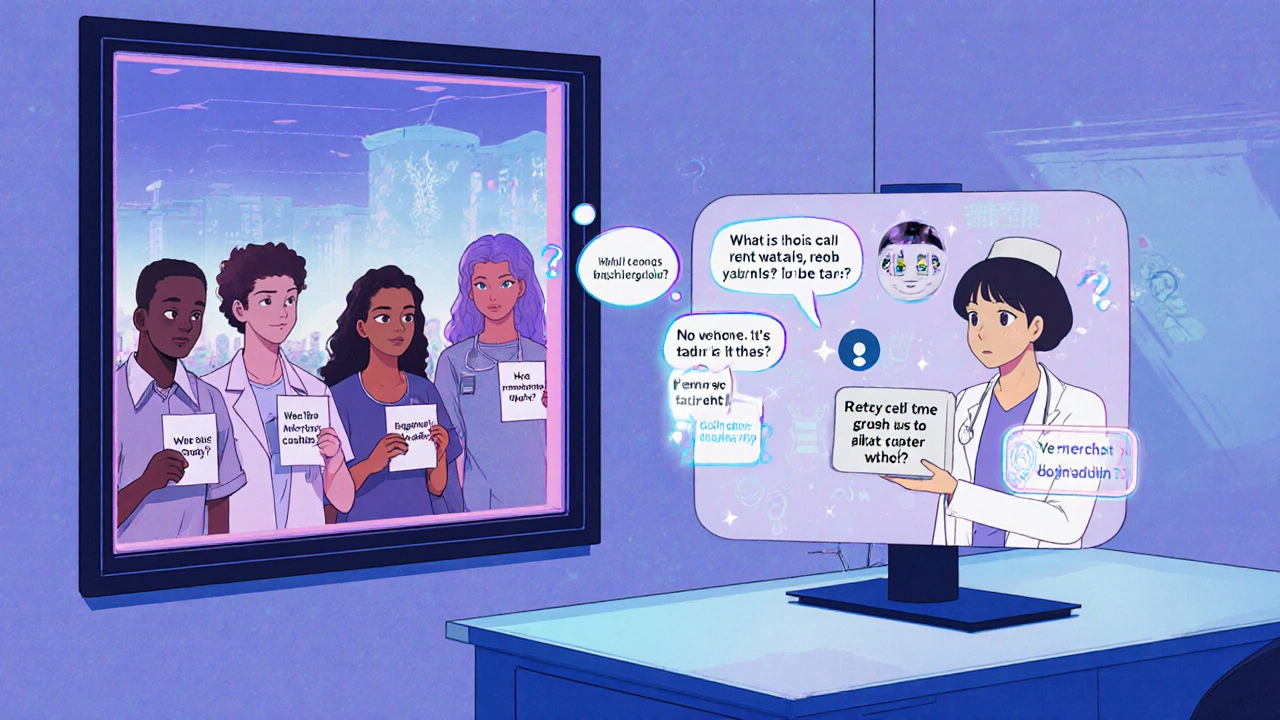
The hidden gaps: time, equity, and sustainability
Even the best programs have blind spots. A 2023 AAMC survey found 58% of healthcare workers say they know the skills-but lack time to use them in 15-minute appointments. Doctors interrupt patients after just 13.3 seconds on average, even after training.
Another issue: equity. AHRQ’s 2023 report found a 28% satisfaction gap between white patients and minority patients when it comes to communication. Yet 60% of existing programs don’t address cultural humility or language barriers. That’s changing. In 2024, new courses from UT Austin and others now include modules on communicating with non-English speakers, LGBTQ+ patients, and those with low health literacy.
And funding? Only 42% of hospital-based programs have steady budgets. Most rely on grants or one-time training dollars. Without long-term investment, skills fade. Tulane’s 2022 study showed communication skills plateau at 70% proficiency without ongoing reinforcement.
What’s next: AI, telehealth, and mandatory training
The field is evolving fast. ACH is testing AI tools that give real-time feedback during simulated conversations-cutting skill acquisition time by 22%. New programs now include virtual communication modules because telehealth isn’t going away.
More universities are offering master’s degrees in health communication. Johns Hopkins and UPenn lead the pack, with 47 schools now offering them-up from 29 in 2019. And the National Academy of Medicine just recommended that communication training become mandatory for all clinicians. If that happens, every hospital, clinic, and nursing home will need to adapt.
The future isn’t just about better conversations. It’s about building systems where good communication isn’t optional-it’s built into the workflow, supported by technology, and rewarded by outcomes.
What you can do-even if you’re not a trainer
You don’t need to run a program to make a difference. If you’re a patient, ask: "What’s the one thing I should remember after today?" If you’re a nurse, start each shift by asking your team: "Who needs extra clarity today?" If you’re a manager, track communication scores-not just infection rates or wait times.
Communication isn’t soft skill. It’s clinical skill. And like any skill, it improves with practice, feedback, and structure. The programs exist. The evidence is clear. The question isn’t whether we can afford to train people. It’s whether we can afford not to.
What are institutional generic education programs in healthcare communication?
They are structured, evidence-based training programs designed to improve communication skills across healthcare teams. Unlike generic workshops, these programs target specific behaviors-like listening, empathy, and interprofessional collaboration-that directly impact patient safety, satisfaction, and outcomes. They’re used by hospitals, universities, and public health agencies to reduce errors and meet regulatory standards.
Do these programs actually improve patient care?
Yes. Studies show communication training reduces malpractice claims by 30%, improves patient satisfaction scores by up to 78%, and lowers readmission rates. Programs like Northwestern’s mastery learning model show 37% higher skill retention after six months. Hospitals using these programs also see better HCAHPS scores, which directly affect Medicare reimbursement.
Who should take these courses?
Everyone. Doctors, nurses, pharmacists, social workers, infection control specialists, and even hospital administrators benefit. Programs are tailored: some focus on patient interactions, others on media relations or team communication. For example, SHEA trains infection preventionists to handle public health crises, while PEP trains clinicians to build trust with patients.
Are these programs expensive or hard to access?
Not necessarily. Some, like UT Austin’s Health Communication Training Series, are free. Others, like Mayo Clinic’s course, cost under $100 and offer continuing education credits. Master’s programs are pricier-around $1,870 per credit-but most hospitals offer free or subsidized training as part of professional development. Online options make them accessible even for rural or part-time staff.
Why do some healthcare workers resist communication training?
Three main reasons: time pressure, skepticism that it’s "real" medicine, and fear of being judged. Many feel they’re already good communicators. Others say they don’t have time to practice new skills during packed schedules. The most successful programs address this by using peer models, embedding training into daily workflows, and showing real data on reduced burnout and complaints.
How long does it take to see results from communication training?
Skills start improving after 3-6 weeks of consistent practice. But full integration takes 3-6 months. Without ongoing reinforcement, skills decline. Programs that use EHR prompts, regular feedback, and peer coaching see the longest-lasting results. One hospital saw a 15% drop in patient complaints after just four months of embedding communication checks into shift handoffs.
Is communication training required by law?
Not yet universally, but it’s increasingly mandatory. The Joint Commission requires hospitals to have effective communication processes. CMS ties 30% of reimbursement to patient communication scores. Many states now require communication training for licensure renewal. The National Academy of Medicine has recommended making it mandatory for all clinicians-so regulation is likely to expand.
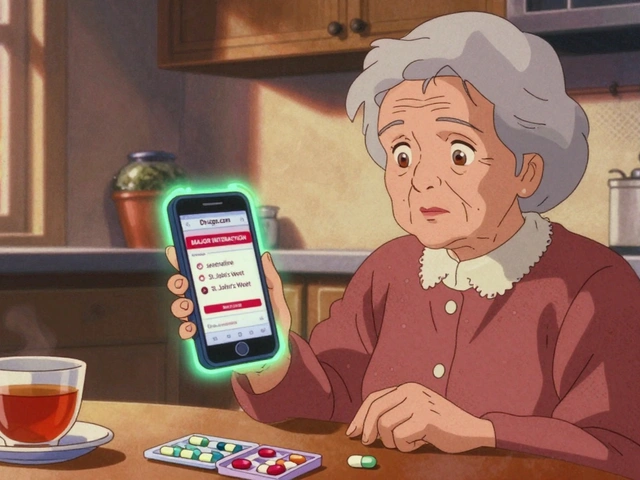

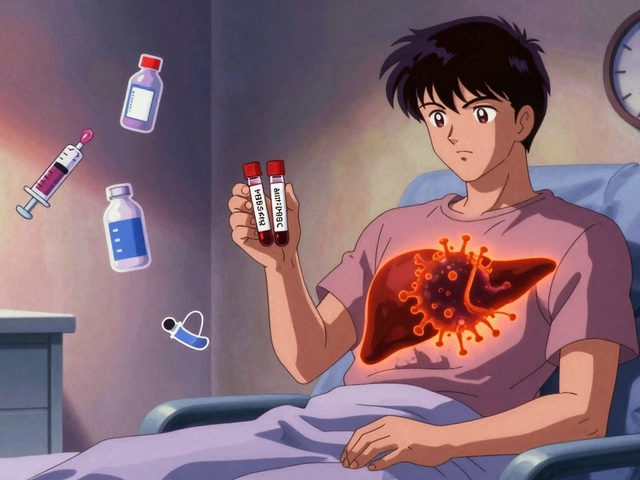
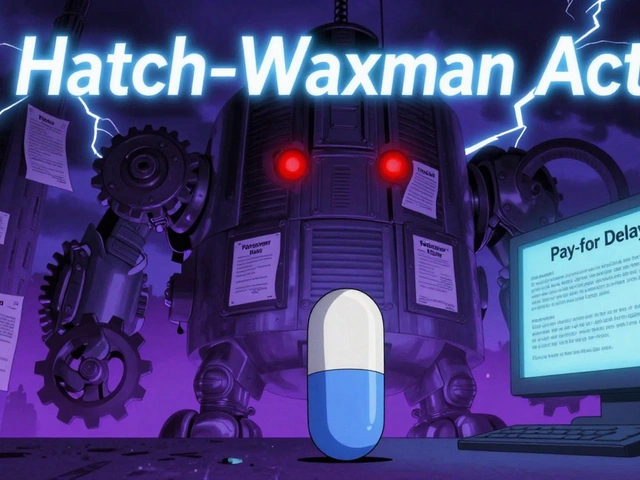
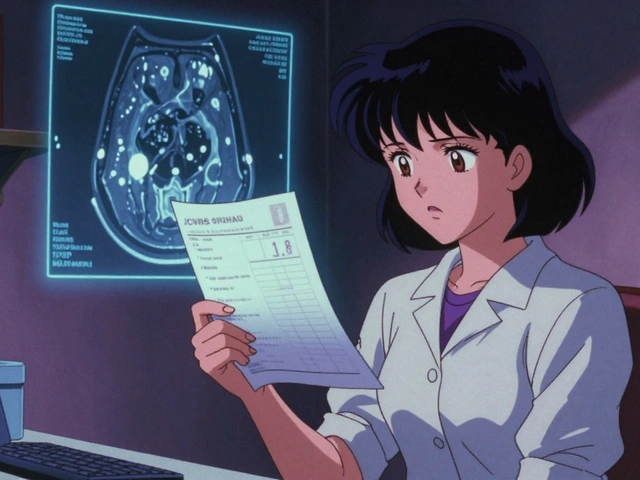
11 Comments
This is what healthcare actually needs. Simple, clear, and backed by data. No fluff.
People think communication is about being nice but its about survival bro if you cant say what you mean in 15 mins someone dies and no one cares until its too late 😤
The assertion that communication training reduces malpractice claims by thirty percent is statistically significant, yet it fails to account for confounding variables such as institutional culture, staffing ratios, and systemic underfunding. One must approach such metrics with epistemological caution.
Oh please. You think training fixes everything? My cousin’s a nurse and she’s got 3 minutes per patient. They don’t want communication-they want bodies in beds. This whole thing is just performative HR theater.
I... I mean... I don't know... I think... the thing is... the system... it's... broken... like... really broken... and no one... no one is... fixing it... like... at all... like... ever... ever ever ever...
We are all just atoms in a machine screaming into the void... but if you speak with intention... maybe... just maybe... the void listens 😌
they say empathy but what they really mean is dont make waves and smile while you get yelled at for 10 hours straight... its not training its survival training with extra steps 🤷♀️
I’ve seen this work firsthand. A buddy of mine at a rural clinic started using the EHR prompts after training. First week, three patients came back saying ‘I finally understood what you meant.’ No one was handing out medals. But that’s the point. Real change doesn’t need applause. Just results.
It’s heartening to see that institutions are finally recognizing that communication is not a soft skill, but a clinical imperative-rooted in evidence, refined through practice, and sustained through culture. When we invest in training nurses, pharmacists, and administrators-not just physicians-we create ecosystems where safety, dignity, and clarity become the default, not the exception. The data is unequivocal: when communication improves, outcomes improve. And when outcomes improve, lives are saved. Let’s not treat this as a compliance checkbox, but as the foundational pillar of healing.
You know what they don’t tell you? The EHR systems are designed to make communication harder. Every pop-up, every mandatory field-it’s all tracked. Who’s watching? Who’s storing this? What if your ‘empathy score’ becomes part of your performance review? And who’s selling this data? I’m not saying it’s evil... but I’m not not saying it’s evil either...
I love that they’re teaching boundary setting 🙌 I’ve been on the receiving end of a patient screaming at me for 20 mins because I said ‘no’ to an unnecessary test. I didn’t break. I didn’t cry. I just said ‘I hear you, and here’s why we’re doing this.’ Felt like a superhero. 😊